Ethanol exports roared back in 2024, and 2025 proved that roar had teeth behind it. With U.S. use stagnant and the E15 can still being kicked down the road, producers once again leaned on global demand—and the world keeps buying.
By midyear, the U.S. had already shipped more than 1 billion gallons—27% ahead of last year. USDA projects total exports near 1.9 billion gallons, roughly matching 2024’s record. January alone saw just under 200 million gallons—the highest in nine months—as India surged to a top buyer while Canada, still the number one destination, dipped slightly.
Monthly EIA data showed steady strength after that: 140 million gallons in February, almost 200 again in March and 170 in April. Shipments fluctuated with logistics but stayed historically high.
Despite its de-emphasis in the U.S., global decarbonization policy continues to do a lot of ethanol’s marketing. Canada’s Clean Fuel Regulations, Europe’s Renewable Energy Directive, and India’s E20 program all pulled in U.S. product. Ethanol’s blend-ready infrastructure and cost advantage over aromatic octane boosters give it a competitive edge even with elevated freight costs.
A large U.S. corn crop stabilized input prices, allowing producers to beat competitors abroad at margins better than in crowded domestic markets. The U.S. Grains and Bioproducts Council (USGBC) says overseas buyers view U.S. supply as consistent and affordable—two adjectives that often open doors faster than mandates. That’s not to say policy doesn’t matter. Canada, India, Japan, South Korea, and the EU all expanded or began enforcing blend mandates, accounting for most 2025 exports.
Not everything has gone smoothly. Freight constraints through the Gulf and Panama Canal tightened margins, currency fluctuation occasionally drove U.S. ethanol prices higher than Brazilian or European product, and new competition from small South American producers all took some bites. Meanwhile, U.S. ethanol demand stayed flat, amid continued E15 foot-dragging.
What we’ve learned from the past two years is that exports aren’t bonus gallons—they’re lifelines. With U.S. gasoline use stagnant, foreign demand keeps production capacity utilized and corn demand strong. In international markets, cost control equals competitiveness: freight, certification, and carbon intensity scores can swing margins faster than corn prices. Policy advocacy is critical, and our industry’s work with trading partners through the USGBC and others remains essential.
2025 confirmed U.S. ethanol is exporting its way to stability. Around 1.9 billion gallons likely went through American docks this year, generating roughly $4 billion in trade value and supporting thousands of rural jobs. Yet success brings pressure: 2025 was a good year. 2026 isn’t guaranteed. Ethanol keeps proving its worth as the world’s cheapest source of clean octane and our challenge for 2026 is to keep the barrels moving and the story positive, while continuing to keep pressure on Washington, D.C. and California to hit the E15 gas pedal.





